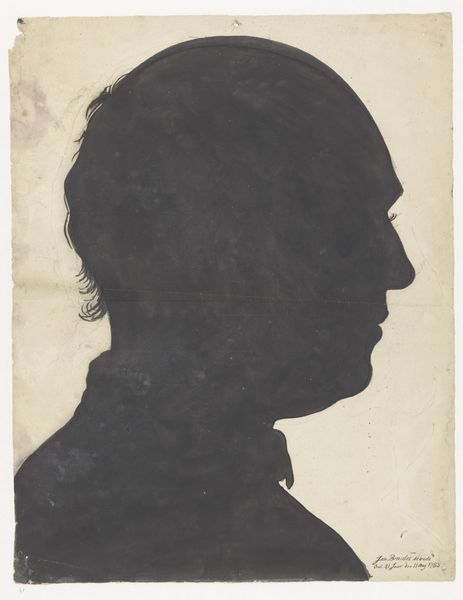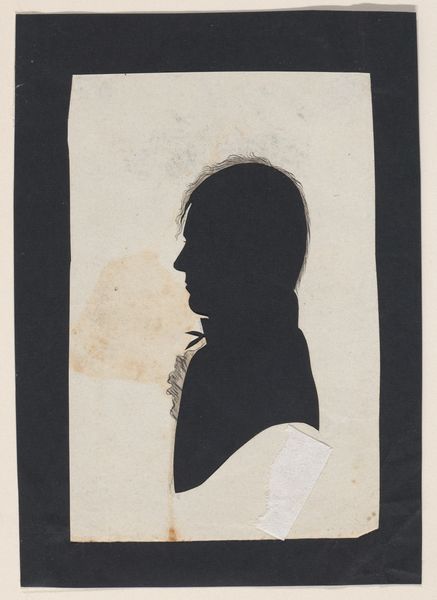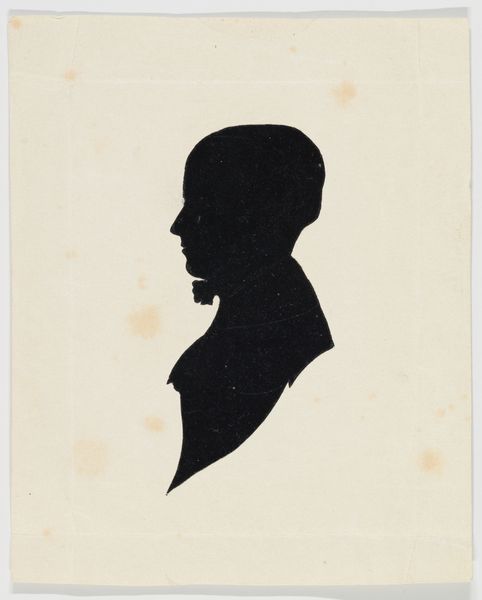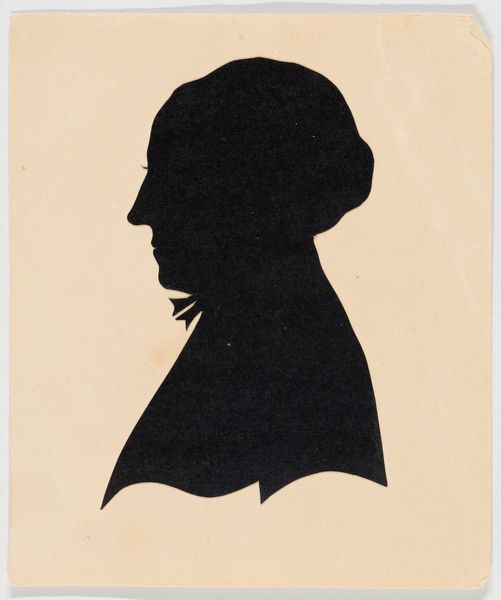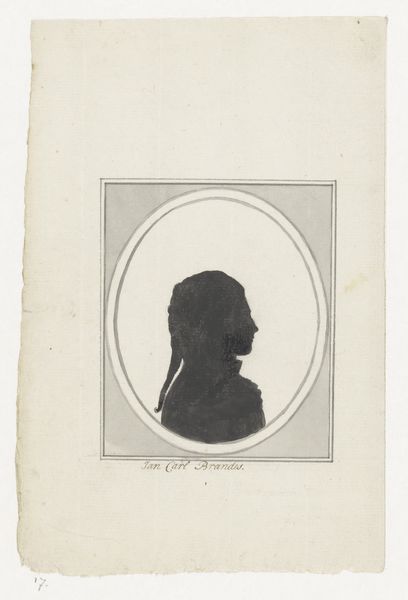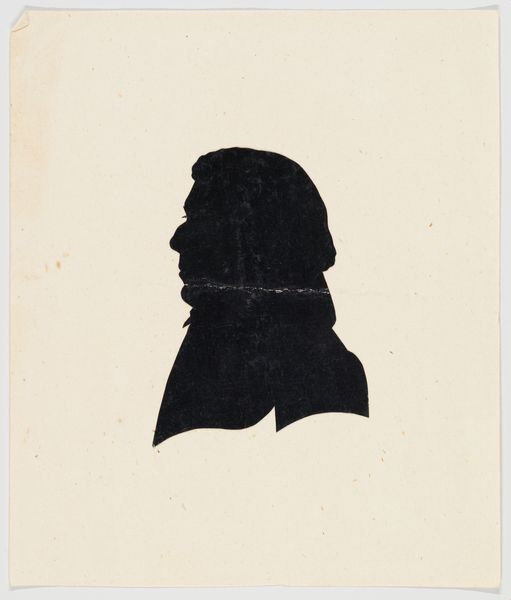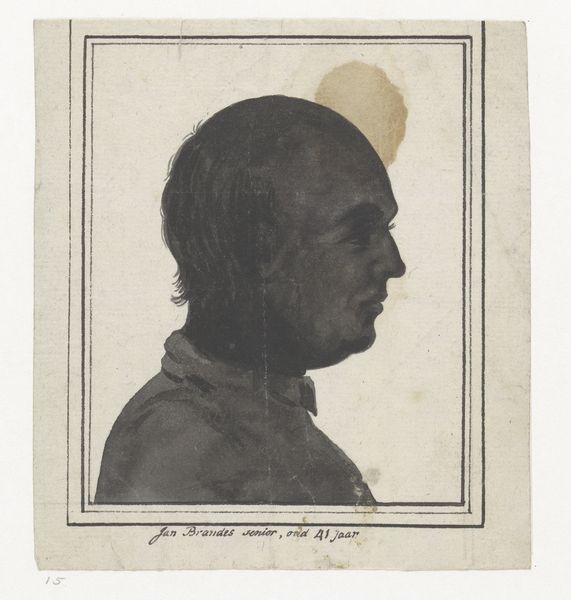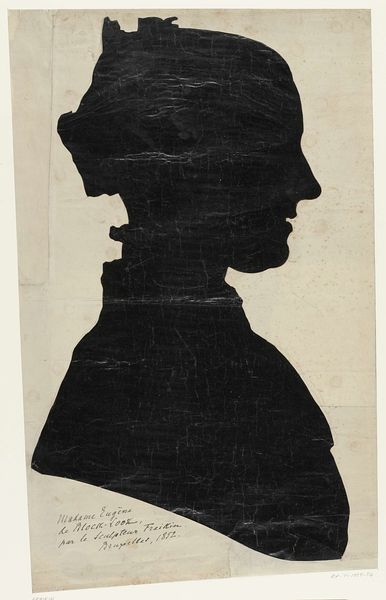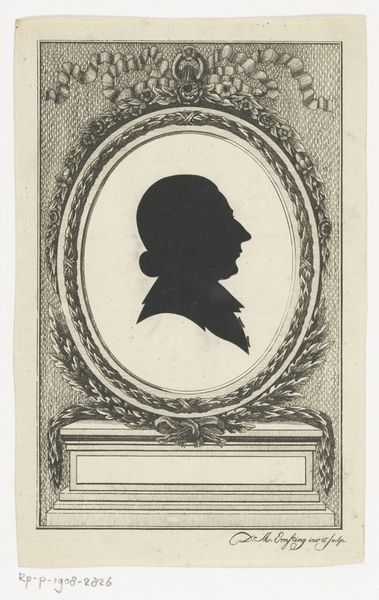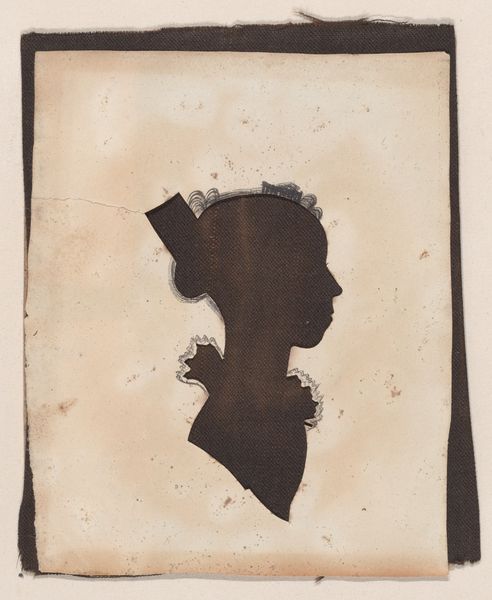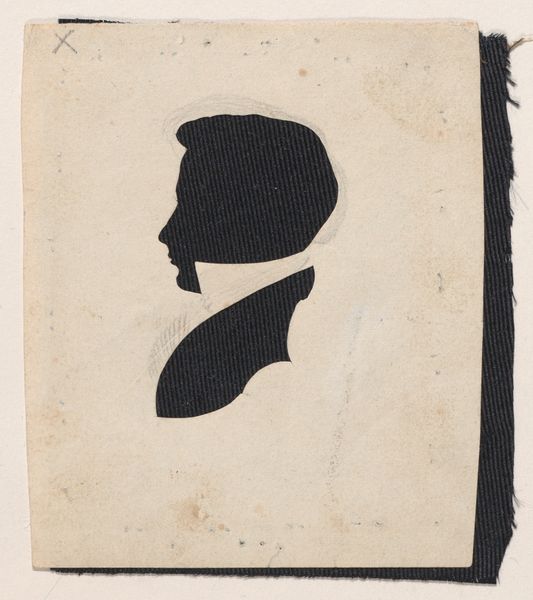
drawing, ink
#
portrait
#
drawing
#
figuration
#
ink
#
pencil drawing
#
limited contrast and shading
#
line
#
academic-art
Dimensions: height 414 mm, width 330 mm
Copyright: Rijks Museum: Open Domain
Curator: Up next, we have an interesting piece: a silhouette portrait of Jan Brandes, likely created between 1783 and 1788. It’s an ink drawing, stark and simple in its presentation. Editor: Yes, and the first thing that strikes me is how austere and absolute it is in its blackness. The pure form isolates the profile into an almost severe iconic space. It feels…removed. Curator: Indeed. Silhouettes, particularly in the late 18th century, acted as potent symbols of remembrance. In a pre-photographic era, these profiles were accessible surrogates for the physical presence of a person, almost a shadow of their very existence. The flatness speaks to that abstracted sense of self. Editor: I see the stark flatness less as a statement on emotional detachment, and more on efficient semiotics. With an economy of line and tone, all superfluous visual information has been reduced to the essential—enough to still denote the sitter in absentia. Curator: Yet, consider the symbolic weight: Brandes, a clergyman and traveler, becomes a void—a shadow of journeys taken, theological contemplation, and perhaps, even lost connections to loved ones from afar. He’s both present, immortalized on paper, and simultaneously absent. Editor: Fascinating interpretation. However, look at how precisely the line work delineates the subtle swell of the chin, the cut of his hair. Note also how even with an application so austere, there’s a subtle shift to gray tones on the paper. These details pull him back into the material world. This silhouette feels surprisingly intimate. Curator: I concede, the work possesses a quiet power. These silhouettes, however stylised and symbolic, offered a kind of personal, portable history to those who held them. Editor: Absolutely, it reminds me of the way ancient Roman portrait busts captured idealized yet immediately recognizable representations. Though made by completely different means, both served the important function of creating and cementing enduring memory. Curator: A fitting conclusion. I hope you'll agree it’s a valuable object lesson regarding how deeply symbols are embedded in what appear, on the surface, to be mere traces. Editor: Yes, it has definitely shifted my perception. It serves as a great reminder to look closer, beneath what at first seems minimalist, in any form.
Comments
No comments
Be the first to comment and join the conversation on the ultimate creative platform.
